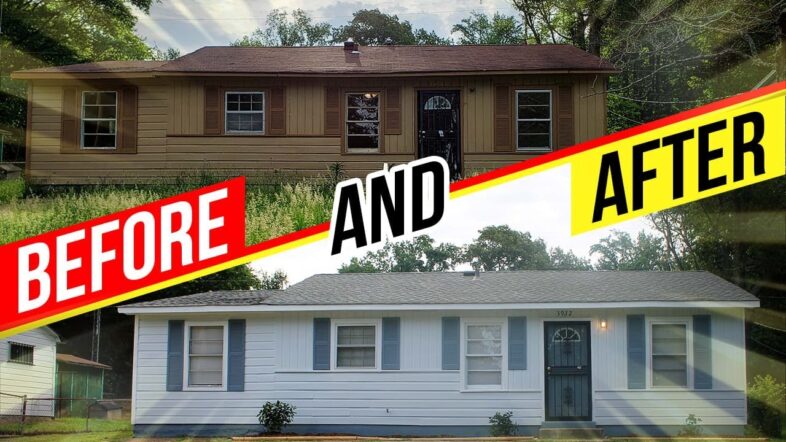Strategic Analysis Report: The Buy-Retail-Rehab Deal Model
Source: www.REISkills.com
Subject: Comprehensive Overview of the Retail Real Estate Investment Strategy
1.0 Executive Summary
This report details the “Buy-Retail-Rehab” investment model, a strategy that involves purchasing distressed properties, renovating them, and selling them to retail homebuyers. Sourced from REISkills.com, the analysis outlines a high-reward but high-effort approach to real estate investing.
The model offers the potential for significant, lump-sum paydays and the creation of secondary income streams through seller-financed mortgages. However, it is also characterized as one of the most challenging methods due to its demands for substantial capital, effective project management, and navigating complex buyer financing hurdles. Success in this arena requires a specific skill set to manage the inherent disadvantages.
2.0 Advantages of the Retail Deal Model
The retail strategy presents several compelling benefits that contribute to its profitability and appeal.
- 2.1 Substantial Profit Potential: The primary advantage is the opportunity for large, single-payday profits upon the sale of each renovated property.
- 2.2 Facilitation of Buyer Financing: To ease the buyer’s qualification process, the seller can offer a seller-held second mortgage. This creative financing technique can make the property accessible to a larger pool of buyers.
- 2.3 Creation of Long-Term Cash Flow: By holding multiple seller-financed second mortgages, an investor can build a significant and steady stream of passive monthly income.
- 2.4 Financial Flexibility: These seller-held mortgages are liquid assets. They can be used as collateral for down payments on new deals or sold at a discount for a immediate lump sum of cash.
- 2.5 Aesthetic and Professional Satisfaction: This model typically involves working on more attractive properties in desirable neighborhoods compared to wholesaling. Investors also gain pride and accomplishment from revitalizing a distressed property.
3.0 Disadvantages and Operational Challenges
The retail model is intensive and comes with a distinct set of challenges that require careful management.
- 3.1 Sourcing Difficult Deals: Finding properties at a steep enough discount to account for repair costs, holding costs, and profit is inherently difficult, especially in competitive, “nicer” areas.
- 3.2 High Capital Requirements: The investor must secure the capital for both the property purchase and the entire rehabilitation budget before any revenue is generated.
- 3.3 Contractor Management: Cited as “the worst part of investing,” managing contractors and repairmen is a significant hassle that requires time, oversight, and conflict-resolution skills. Inexperience in construction management can lead to budget overruns and delays.
- 3.4 Accumulating Holding Costs: Throughout the repair and marketing phases, the investor is responsible for ongoing expenses, including mortgage payments, property taxes, and insurance, which erode profits the longer the project takes.
- 3.5 Buyer Financing Hurdles: The investor often must assist buyers with mortgage applications and even credit repair, adding another layer of non-core work to the process.
- 3.6 The “Seasoning” Problem: Lenders often hesitate to finance a property that an investor is reselling quickly at a higher price. This “seasoning” issue can block conventional financing for the end-buyer.
- 3.7 High Transaction Costs: To circumvent seasoning, investors often rely on FHA or Fannie Mae loans, which can require the seller (the investor) to pay substantial closing costs on the buyer’s behalf, cutting into the final profit margin.
4.0 Key Concepts and Definitions
- Buy-Retail-Rehab Deal: The process of buying a property, renovating it, and selling it on the open market to an end-user.
- Seller-Held Second Mortgage: A financing arrangement where the seller of the property acts as the lender for a portion of the purchase price, often to help the buyer qualify for a primary loan from a bank.
- Seasoning: A lender’s requirement that an investor must own a property for a minimum period (e.g., 90 days) before they can resell it to a buyer using a new bank loan. This is designed to prevent rapid “flipping.”
5.0 Conclusion and Strategic Outlook
The Buy-Retail-Rehab model outlined by REISkills.com is a dual-sided strategy. It offers a clear path to high single-transaction profits and the building of long-term wealth through creative financing. However, it is not a passive endeavor. The model demands expertise in deal sourcing, project management, capital access, and buyer financing.
Final Recommendation: This strategy is best suited for an investor who has some experience in real estate, possesses or can acquire the necessary capital, and is prepared to manage a complex, time-consuming project from acquisition to sale. Success hinges on the investor’s ability to meticulously mitigate the significant disadvantages while leveraging the powerful advantages.
create glossary retail rehab deals
Of course. Here is a comprehensive glossary of key terms related to retail rehab deals, building upon the concepts from the provided report.
Glossary: Retail Rehab Deals
After Repair Value (ARV)
The estimated value of a property after all renovations and repairs are completed. This is the crucial figure used to determine the potential sale price and profit margin in a retail rehab deal.
Buy-Retail-Rehab Deal
A real estate investment strategy where an investor purchases a distressed property, renovates it, and then sells it on the open market to a retail homebuyer (the end-user). This is also commonly known as “fix and flip.”
Capital
The money required to fund the investment, including the purchase price, renovation costs, holding costs, and closing costs. Investors must have access to sufficient capital, either through cash, loans, or partners.
Contractor Management
The process of hiring, overseeing, and managing the general contractor and subcontractors who perform the rehabilitation work. This is often cited as one of the most challenging aspects of a rehab project due to potential issues with timelines, budgets, and work quality.
FHA 203(k) Loan
A type of mortgage that allows a homebuyer to finance both the purchase of a house and the cost of its rehabilitation through a single loan. Investors often sell to buyers using this program as it can help circumvent seasoning issues.
Holding Costs
The ongoing expenses incurred while owning a property. These include mortgage interest payments, property taxes, insurance, and utilities. These costs accumulate daily, making project speed a critical factor for profitability.
Rehab (Rehabilitation)
The process of repairing and renovating a property to increase its value and make it marketable to retail buyers. The scope can range from cosmetic updates to major structural repairs.
Retail Buyer
The end-user of the property, typically a person or family buying the home to live in it, as opposed to another investor. Selling to a retail buyer usually commands the highest price.
Seasoning
A requirement by many conventional lenders that an investor must own a property for a minimum period (typically 90 days) before a new buyer can obtain a mortgage to purchase it. This is a significant hurdle for quick flips.
Second Mortgage (Seller-Held / Purchase Money Mortgage)
A loan that is subordinate to the primary (first) mortgage. In a retail rehab deal, the seller (the investor) may offer to “hold the paper,” meaning they act as the lender for a second mortgage to help the buyer qualify for financing by reducing the amount needed from a primary lender.
Seller Concessions
Closing costs that the seller (the investor) agrees to pay on behalf of the buyer. This is a common tactic used to make the deal more attractive to buyers and to facilitate deals using government-backed loans like FHA loans, which allow for such concessions.
Wholesaling
A contrasting real estate strategy where an investor secures a property under contract and then assigns or sells that contract to another end-buyer (often another investor) for a fee without ever performing renovations. This is typically faster and requires less capital than a retail rehab deal.
To-Do List: Joint Venture (50/50) Fix & Flip with Private Money & Retail Sale
Project: Purchase with Private Money -> 50/50 JV in LLC -> Rehab -> Retail Sale (FHA/VA/Conventional w/ Agent)
Phase 1: Pre-Purchase & JV/LLC Setup
Legal & Structural Foundation
- Draft & Execute a Joint Venture (JV) Agreement: This is critical. It must detail:
- 50/50 profit/loss split.
- Roles & responsibilities (e.g., who finds the deal, manages rehab, handles finances?).
- Capital contributions from each partner (cash, private money sourcing, sweat equity?).
- Decision-making process and dispute resolution.
- Exit strategy and terms for dissolution.
- Form the LLC:
- Choose a name and file Articles of Organization with the state.
- Draft an Operating Agreement for the LLC, reflecting the terms of the JV Agreement.
- Obtain an EIN (Employer Identification Number) from the IRS.
- Open a dedicated business bank account for the LLC.
- Secure Formal Private Money Loan Terms:
- Document the loan agreement: principal amount, interest rate, term, and repayment schedule (typically upon sale).
- Determine if the loan is to the LLC or to the individuals.
- Formalize the lien position (usually a first mortgage/deed of trust).
Deal Analysis & Acquisition
- Thoroughly Analyze the Deal:
- Determine the Maximum Allowable Offer (MAO) based on:
- After Repair Value (ARV): Use solid comps.
- Repair Costs: Get preliminary contractor bids.
- Holding Costs, Closing Costs, & Agent Commissions.
- Desired Profit: Ensure the 50/50 split meets both partners’ goals after all expenses and loan repayment.
- Determine the Maximum Allowable Offer (MAO) based on:
- Make the Offer:
- Submit the purchase contract in the name of the LLC (or assignable to the LLC).
- Include all standard contingencies (inspection, financing, etc.).
Phase 2: Purchase, Rehab & Holding
Closing the Purchase
- Coordinate with Title Company: Ensure the LLC is on the deed.
- Fund the Private Money Loan: Transfer funds to the LLC’s account.
- Close on the Property: Sign documents as a member/manager of the LLC.
- Secure Insurance:
- Obtain a Builder’s Risk / Course of Construction insurance policy.
- Ensure the LLC is named correctly on the policy.
Rehabilitation Execution
- Finalize Rehab Plans: Create a detailed Scope of Work (SOW).
- Vet and Hire Contractors:
- Get at least 3 detailed, fixed-price bids.
- Check references and insurance certificates.
- Sign a solid contract with the chosen general contractor.
- Manage the Project:
- Establish a draw schedule for contractor payments.
- Conduct frequent site visits to monitor progress and quality.
- [ Track all rehab expenses meticulously in a shared spreadsheet.
Phase 3: Pre-Marketing & Listing
Property Preparation
- Order a Pre-Listing Appraisal: (Optional but highly recommended) to confirm the ARV for pricing and for the JV partners’ confidence.
- Stage the Property: Professionally stage or “vacuum stage” the home to appeal to retail buyers.
- Get Professional Photography & Videography.
Agent & Listing Setup
- Hire a Listing Agent: Choose one experienced with selling to FHA/VA/conventional buyers.
- Sign Listing Agreement: Negotiate the commission and confirm the listing period.
- Disclosures: Work with the agent to prepare all required seller disclosures (this is critical for a flip). Disclose any known material defects.
Phase 4: Sale & Closing with FHA/VA/Conventional Buyer
Offer Management
- Review Offers with Agent: Carefully evaluate not just the price, but the buyer’s financing and strength.
- Prioritize Strong Pre-Approvals: Look for a solid pre-approval letter from a reputable direct lender (not a broker).
- Accept an Offer.
Navigating the Process
- Be Prepared for the Appraisal: The buyer’s lender will order an appraisal. Provide the appraiser with your comps and list of renovations.
- Address Inspection Repairs:
- FHA/VA loans have specific Property Condition Requirements (PCRs).
- Be prepared to negotiate and pay for minor repairs (e.g., cracked windows, safety issues, peeling paint) to keep the deal together.
- Manage “Seasoning”: Your agent should communicate with the buyer’s lender to ensure the quick flip does not violate their “seasoning” policies. FHA and VA are typically more flexible if the work is documented.
- Coordinate with Title Company: Provide the LLC’s operating agreement and resolution to authorize the sale.
Phase 5: Post-Sale & Profit Distribution
Final Settlement
- Review the Closing Disclosure (CD): Ensure all numbers are correct.
- Confirm Repayment: The private money loan (principal + interest) is the first line item paid from the sale proceeds at closing.
- Pay all Invoices: Ensure all contractor bills, holding costs, and agent commissions are paid from the LLC account.
Profit Split & Wind-Down
- Calculate Net Profit: (Sale Price) – (Purchase Price) – (Loan Repayment) – (Rehab Costs) – (Holding Costs) – (All Other Costs) = Net Profit.
- Distribute 50% of Net Profit to each JV partner from the LLC account.
- File Final LLC Taxes: Consult with a CPA.
- Conduct a Post-Mortem Meeting: Discuss what went well, what didn’t, and if you will proceed with another JV deal.
Disclaimer: This list is a general guide. You must consult with a qualified real estate attorney and CPA to structure your JV, LLC, and private money loan correctly, as the legal and tax implications are significant.



